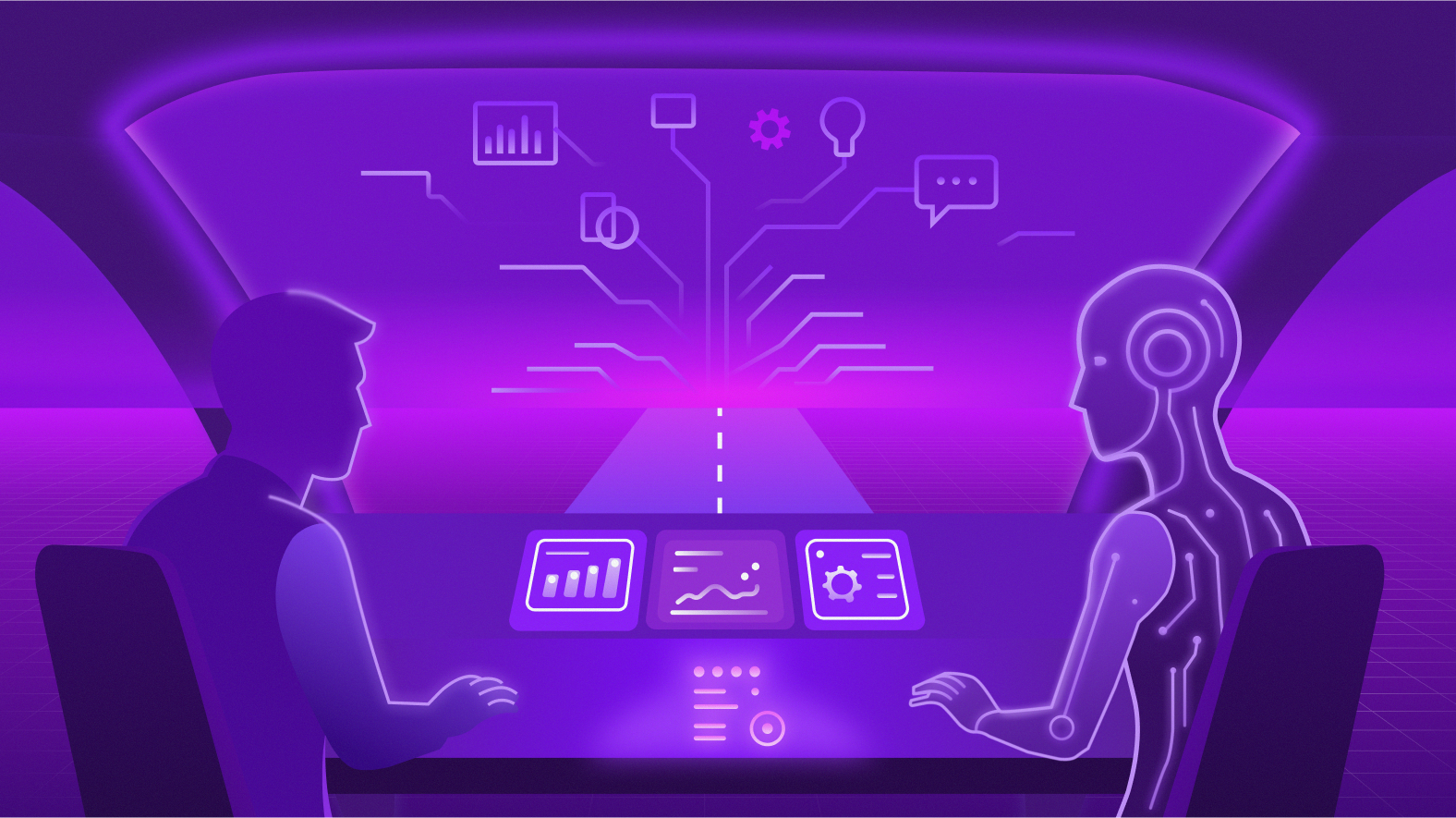Blog > AI Disruption In Orgs, Corporates
From Employee to Co-Pilot: The Role of AI in Rewiring Work

For decades, the relationship between humans and machines in the workplace was defined by clear boundaries. Technology was a tool, programmed, managed, and used to execute predefined tasks, while humans made the strategic and creative decisions. That separation is dissolving rapidly. The rise of generative AI, intelligent automation, and context-aware digital assistants has shifted this dynamic. Employees are no longer simply end-users of technology; they are becoming co-pilots in systems where AI takes an active role in shaping outcomes.
This shift is not just about automation or productivity gains. It represents a fundamental rewiring of how work is structured, how value is created, and how organizations design their talent strategies. The implications span every sector, function, and geography, making this a defining challenge for business leaders over the next decade.

From Tool to Thinking Partner
AI has evolved beyond executing narrow, rules-based tasks. The new generation of AI systems can learn, adapt, and contextualize their responses in real time. Whether drafting complex technical documentation, generating market forecasts, or advising on operational decisions, these systems provide contributions that are increasingly indistinguishable from human reasoning. The employee is no longer simply instructing a machine; they are engaging in an iterative exchange where AI offers suggestions, alternatives, and optimizations.
The co-pilot model transforms the employee’s role from being a sole executor of work to a curator, editor, and validator of AI-generated outputs. In this environment, human judgment, contextual knowledge, and ethical considerations become more, not less, important.
Rethinking Job Architecture
The shift toward AI as a co-pilot challenges traditional job design. Job descriptions anchored in fixed tasks and linear workflows are misaligned with the fluid, adaptive nature of AI-enabled work. Organizations will need to redesign roles to accommodate a constant interplay between human expertise and machine intelligence.
For example, a financial analyst working with AI-generated reports may need deeper skills in interpreting model assumptions, spotting anomalies, and communicating findings in strategic terms. Similarly, a product designer collaborating with generative AI will spend more time refining creative direction and evaluating feasibility than producing raw prototypes. These changes will ripple through competency frameworks, performance metrics, and career progression models.
Decision-Making in the Co-Pilot Era
One of the most profound changes AI brings is in decision-making velocity and scope. AI can process vast volumes of structured and unstructured data, synthesizing insights that previously required weeks of human analysis. This accelerates operational and strategic choices, but it also increases the risk of over-reliance on machine-generated recommendations.
The role of the human co-pilot is to provide the interpretive layer, questioning AI outputs, contextualizing them within business realities, and making value-based trade-offs. Organizations that train employees to challenge, refine, and adapt AI-driven insights will be better positioned to avoid blind spots and bias.
Reskilling for the Co-Pilot Model New Operating Model
The transition from employee to co-pilot requires a new skills portfolio. Technical literacy is no longer confined to IT roles. Every employee, regardless of function, will need foundational skills in AI fluency, understanding how models work, where they are strong, and where they fail. Beyond technical awareness, the co-pilot era elevates the importance of critical thinking, creativity, and emotional intelligence.
Leading organizations are investing in reskilling programs that blend AI literacy with domain expertise. These initiatives go beyond training employees to use AI; they aim to cultivate the ability to question AI, collaborate with it, and integrate its capabilities into problem-solving. This approach ensures that human talent remains indispensable even as machines grow more capable.
Leadership in the AI Co-Pilot Enterprise
For leadership teams, the co-pilot model changes both the tempo and the texture of management. Strategic planning cycles shorten as decision-making becomes more data-driven and iterative. Managers must learn to orchestrate teams where human and AI contributions are intertwined, ensuring that accountability remains clear even when AI is part of the decision chain.
Trust becomes a central leadership challenge. Employees need confidence that AI systems are transparent, explainable, and aligned with organizational values. Leaders who communicate clearly about the role of AI, the safeguards in place, and the shared responsibility between human and machine will build stronger engagement and adoption.
The Risk of Two-Speed Organizations
One potential pitfall is the emergence of two-speed organizations: those who quickly adapt to the co-pilot model, and those who remain locked in traditional, manual workflows. The gap between these two groups can widen rapidly, not only in productivity but also in talent attraction and retention. In competitive labor markets, high-performing employees increasingly expect access to advanced AI tools and a work environment that values augmentation over replacement.
Failing to embrace the co-pilot model risks creating a talent drain as skilled employees migrate to organizations where their capabilities are amplified by technology.
Ethics and the Human Center of Work
The co-pilot model reinforces the need to keep human values at the center of work. As AI systems assume greater decision-making influence, ethical considerations such as bias mitigation, data privacy, and responsible use become non-negotiable. Human oversight must be embedded into AI workflows to ensure that outcomes are fair, transparent, and aligned with stakeholder interests.
Organizations that treat ethics as an afterthought will face not only reputational risks but also regulatory consequences as governance frameworks for AI mature globally.
Rewiring Work for the Next Decade
The transition from employee to co-pilot is not a short-term trend; it is the foundation of the future of work. To fully realize its potential, organizations must integrate AI into the core of their operating models while simultaneously elevating human capability. This means redesigning work processes, rethinking leadership practices, and embedding continuous learning into the organizational fabric.
The organizations that succeed will not be those that replace humans with machines, but those that reimagine how humans and machines can create value together. In this vision, AI is not a rival to human work, but a partner that amplifies it, unlocking new possibilities for innovation, efficiency, and growth.
